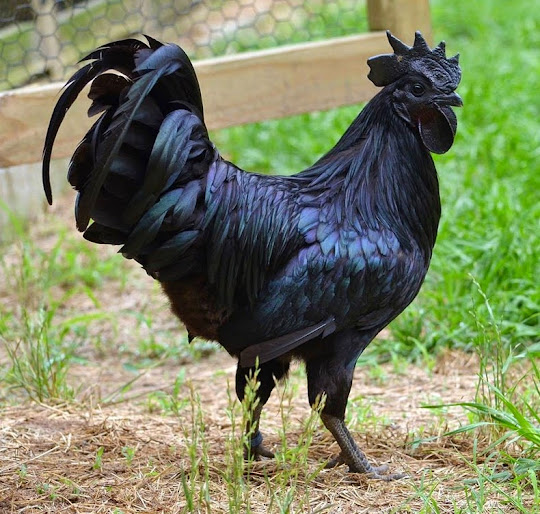This is the Black Dragonfish, and you might see the strong resemblance with the Alien from the movie with the same name. Its scientific name is “Idiacanthus atlanticus”, it’s a long and slender fish that lives in the mesopelagic and bathypelagic waters of the world’s oceans, typically being found at depths of between 5000-7000 feet.

The Black Dragonfish can produce its own light in the blue/green range, as most other deep fish do, but also in the red/infrared range. Thus, the Black Dragonfish has the advantage of producing light that other species can’t perceive.

When the Black Dragonfish is threatened, its photophores – that cover its lower and upper surfaces and are also located under its eyes and at the terminus of its long barbel – light up.

The females usually reach sizes of about 40cm long, while the males only grow to be about 5cm. Male dragonfish also do not possess a functioning digestive system, teeth of any kind, or any of the other defining characteristics of the females of the species — it appears that their sole function in life is reproduction.

When the fish is in the larval form, its eyes nearly detach from the rest of the body, being located at the ends of long flexible stalks that are nearly the length of the larval forms whole body. These then slowly retreat into the skull of the fish as it develops.
The species hunts with the aid of a bright luminescent barbel lure located on its chin. The fish uses this lure to attract prey which have mistaken the lure for a small meal.
Source
READ MORE»

The Black Dragonfish can produce its own light in the blue/green range, as most other deep fish do, but also in the red/infrared range. Thus, the Black Dragonfish has the advantage of producing light that other species can’t perceive.

When the Black Dragonfish is threatened, its photophores – that cover its lower and upper surfaces and are also located under its eyes and at the terminus of its long barbel – light up.

The females usually reach sizes of about 40cm long, while the males only grow to be about 5cm. Male dragonfish also do not possess a functioning digestive system, teeth of any kind, or any of the other defining characteristics of the females of the species — it appears that their sole function in life is reproduction.

When the fish is in the larval form, its eyes nearly detach from the rest of the body, being located at the ends of long flexible stalks that are nearly the length of the larval forms whole body. These then slowly retreat into the skull of the fish as it develops.
The species hunts with the aid of a bright luminescent barbel lure located on its chin. The fish uses this lure to attract prey which have mistaken the lure for a small meal.
Source












